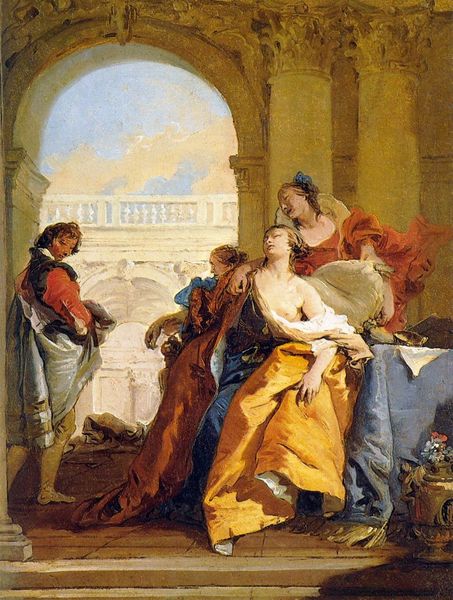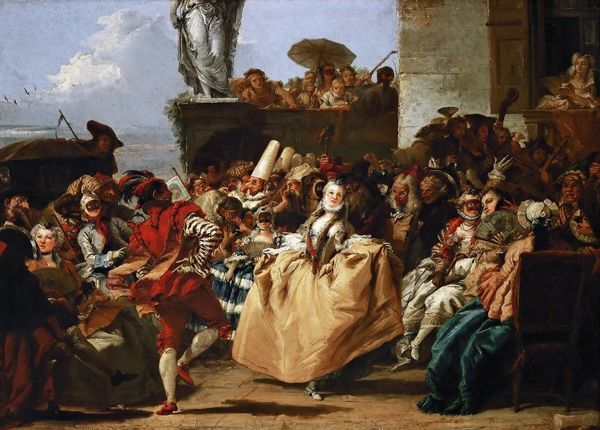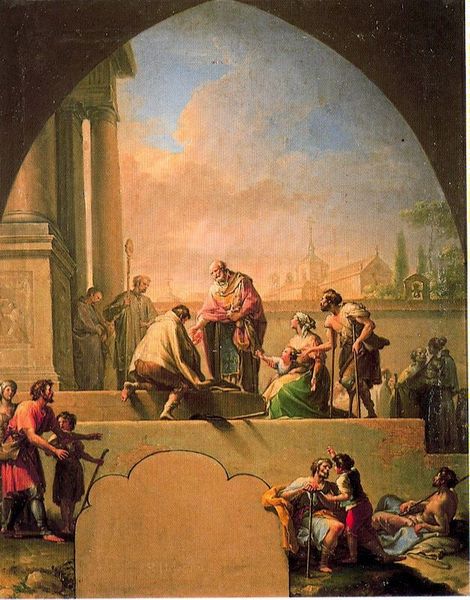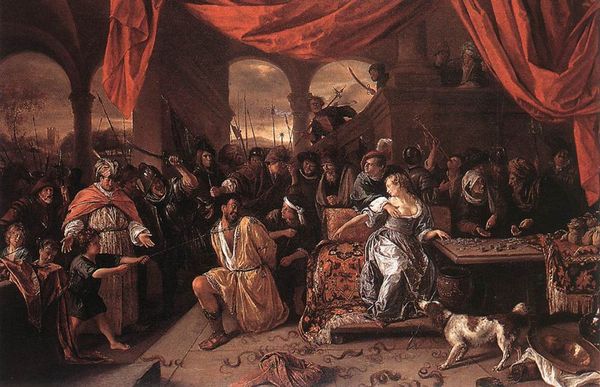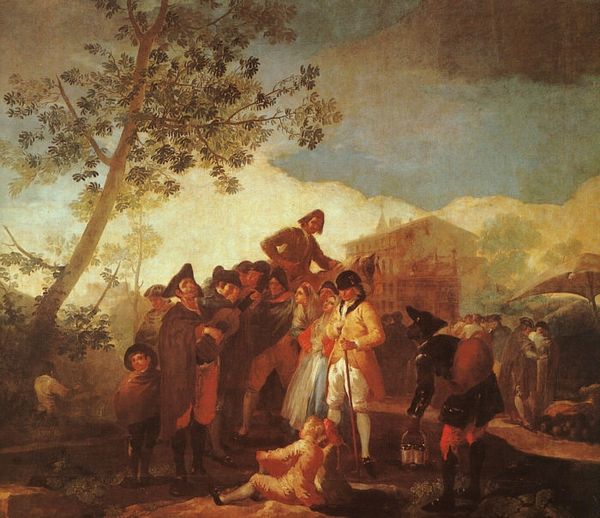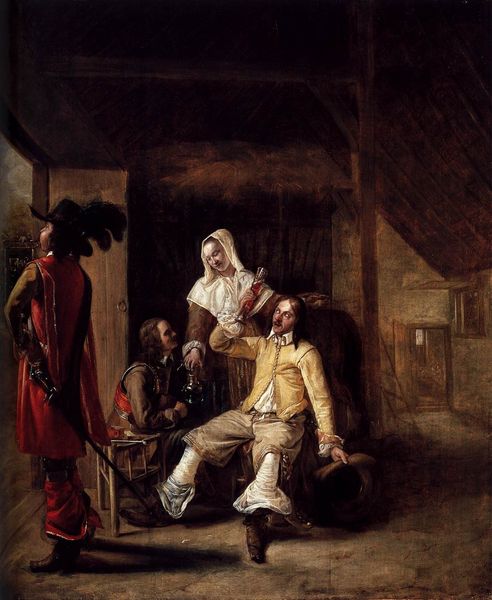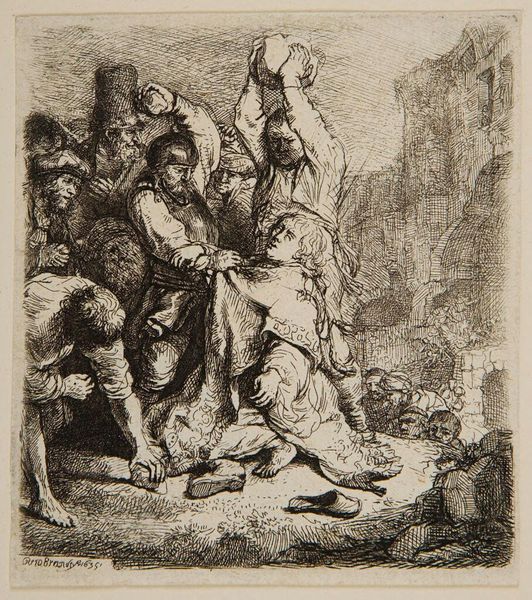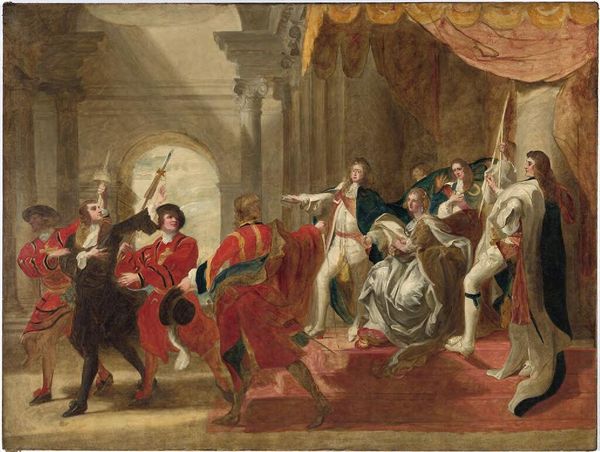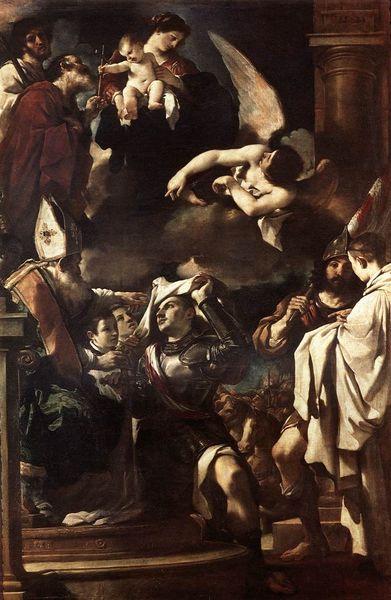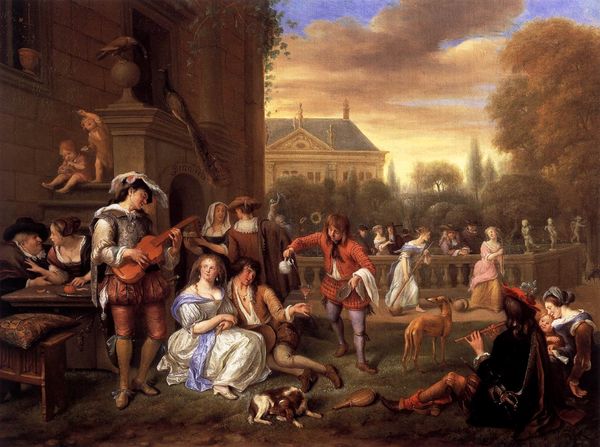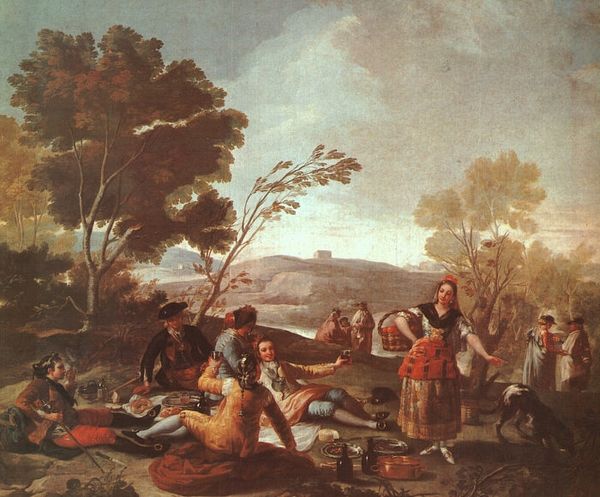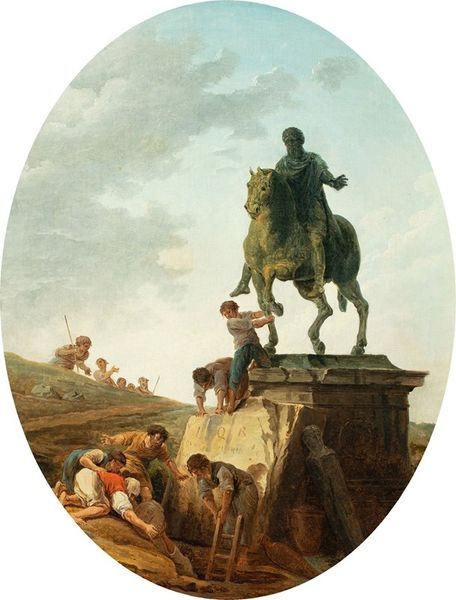
Dimensions: 259 x 136 cm
Copyright: Public domain
Curator: This is Francisco de Goya's "Fight with a young bull", an oil painting dating back to 1780. It's currently housed at the Museo del Prado in Madrid. Editor: My first impression is of controlled chaos. The color palette is rather muted except for the pops of red, and the figures seem almost theatrical in their arrangement, paused in the midst of this charged moment. Curator: Indeed. Goya was very interested in portraying everyday life, and bullfights were a huge part of Spanish culture at the time, so depicting such events provided him with opportunities to explore questions of Spanish national identity and popular pastimes. Editor: Formally speaking, observe the contrast between the dark lower portion of the composition featuring the bull and the sun-drenched backdrop of the architectural structure and spectators. It almost reads as a staged performance with audience and backdrop versus up close action. Curator: Yes, and bear in mind that Goya's patrons at the time – the aristocracy – were interested in commissioning artwork depicting scenes from common life but also imbuing it with some aesthetic sophistication that affirmed their elite status. Editor: Notice the dynamic diagonals throughout—the posture of the fighters, the slope of the wall, all driving your eyes towards the center of the fray. It lends a certain nervous energy to the whole piece, which is interesting because it otherwise appears still. Curator: Precisely. Goya uses this dynamic, charged moment of confrontation in the ring, in front of a crowd, to subtly underscore broader themes about spectacle, risk, and social stratification inherent in this cultural event. He is exploring how social rituals perpetuate inequality. Editor: Absolutely, and I think that the hazy atmospheric perspective adds to the theatrical feel by softening the background and heightening the contrast within the immediate action of the figures themselves. It is fascinating to see how Goya plays with color and brushstroke. Curator: Goya’s portrayal invites us to reconsider the political dimensions of what was and, arguably still remains, a cornerstone of Spanish cultural expression. Editor: A vivid reminder that art is never purely aesthetic.
Comments
No comments
Be the first to comment and join the conversation on the ultimate creative platform.

